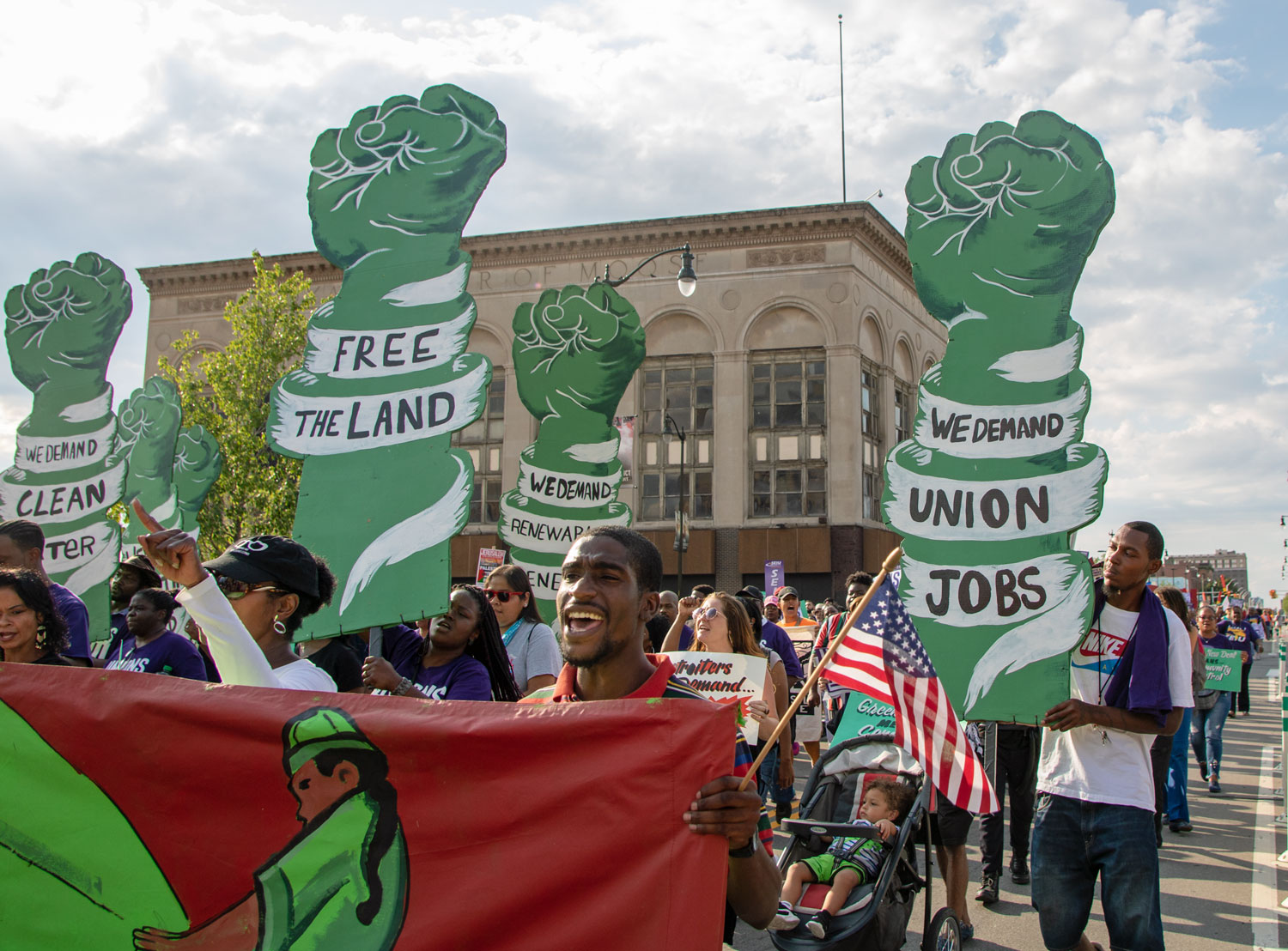A truly green new deal must focus on reducing the amount Americans drive, a new report argues — and doing so will take an unprecedented portfolio of investments into sustainable modes.
In a new report from the Climate and Community Project, researchers said a better Green New Deal would transform U.S. transport policy into "a strategic lever for investing in good-paying low-carbon jobs, justice, and a decarbonized economy."

The details of that proposal contrast sharply from the Biden administration's primary strategies to clean the transportation sector, as evidenced by the recent surface transportation reauthorization bill, the Infrastructure Investment and Jobs Act, which the group fears "could invest dramatically more on highway expansion than on innovative, low-carbon public transit projects."
Now that the IIJA is law, the group says it's more critical than ever that states hold themselves accountable for spending every penny of those funds sustainably (even if the outlook doesn't look good in many communities), and that the Congress get to work now on new legislation to expand the pool of available funds for programs that get people out of cars.
"Life in the United States is organized around personal automobiles powered by petroleum," the group wrote. "For a Green New Deal in transportation to be possible, that has to change. A climate-safe future requires a swift and just decarbonization of the transportation sector, a major expansion of public and active transportation, and the parallel decarbonization of the electricity sector."
Most of the group's suggestions will be familiar to sustainable transportation advocates, who, like the report authors, are actively pushing for "fix-it-first" policies on the nation's roads and bridges; expanding access to federal funding for transportation operations (the group says $25 billion a year is a good starting place); and pouring money into Amtrak and other intercity rail initiatives, to the tune of at least $40 billion a year for at least 10 years.
The IIJA, by contrast, provides the rail sector roughly $13 billion a year across five years, and the roughly $18 billion per year currently authorized for transit is mostly restricted to capital projects, like building train lines, rather than paying the people who keep them running. Worse, both pots of money are dwarfed by the approximately $22 billion in funds promised to highway agencies every year over the same period,.
The group doesn't just want to turn up the dial on federal funding for existing green transportation initiatives, though. It also wants the Biden administration to consider a range of fresh ideas, such as:
- A $300-billion "Clean Mobility for Clunkers" fund, which would offer people and private businesses that give up a gas-powered car a sliding-scale, $5,000 to $10,000 credit towards the purchase of an e-bike, an annual bus pass, a micromobility membership, or some combination of all three. The credit could also be applied towards an electric car, but it wouldn't stretch nearly as far as it would for the low-cost options, which could help sway Americans to pick the package of car-free mobility options. (People who don't have gas powered cars to trade in would still qualify for a universal $300 credit towards the purchase of a new bicycle, and small businesses could access a $2,000 credit to buy cargo bikes and trikes to make local deliveries)
- Leveraging that program to encourage the freight sector to decarbonize, too, and "require 50 percent of deliveries of material purchased by the US government to be made by a zero emissions vehicle by 2025, and 100 percent by 2030"
- Protecting cyclists riders by building 10,000 miles of separated bike lanes (though the group doesn't say how it got to that number, or where they'd actually be built)
- A $300 billion fund to electrify government-owned fleets — including things like mail trucks, which pretty much everyone besides the current postmaster general agrees should have gone green long ago — via formula grants based on population's sized and the number of EVs they've already got
- New regulations on battery component extraction that ensure that today's oil wars don't simply give way to tomorrow's cobalt and lithium wars, by subjecting "imported materials and components to the highest standards for labor rights, human rights, and Indigenous rights, as well as for environmental sustainability and emissions," and requiring manufacturers to use recycled battery components whenever possible before they harvest more
- Giving cities a bigger say in regional transportation decisions by requiring "metropolitan planning organization voting systems to be proportional to resident population," and rewarding regions that reform zoning policy to increase density or build more housing near transit, by giving them more federal aid.
Many of those goals, sadly, are moonshots in today's polarized political landscape — though, as Curbed's Alissa Walker pointed out, it's a whole lot cheaper than Elon Musk-esque proposals that gain a surprising amount of traction with legislators, like "colonizing a second planet or tunneling car holes under every major U.S. city."
And as the climate crisis worsens, it's critical that advocates start sweating the details about what the policies that undergird our green transportation future might look like — and supporting a broad portfolio of aggressive strategies beyond vehicle electrification alone.






